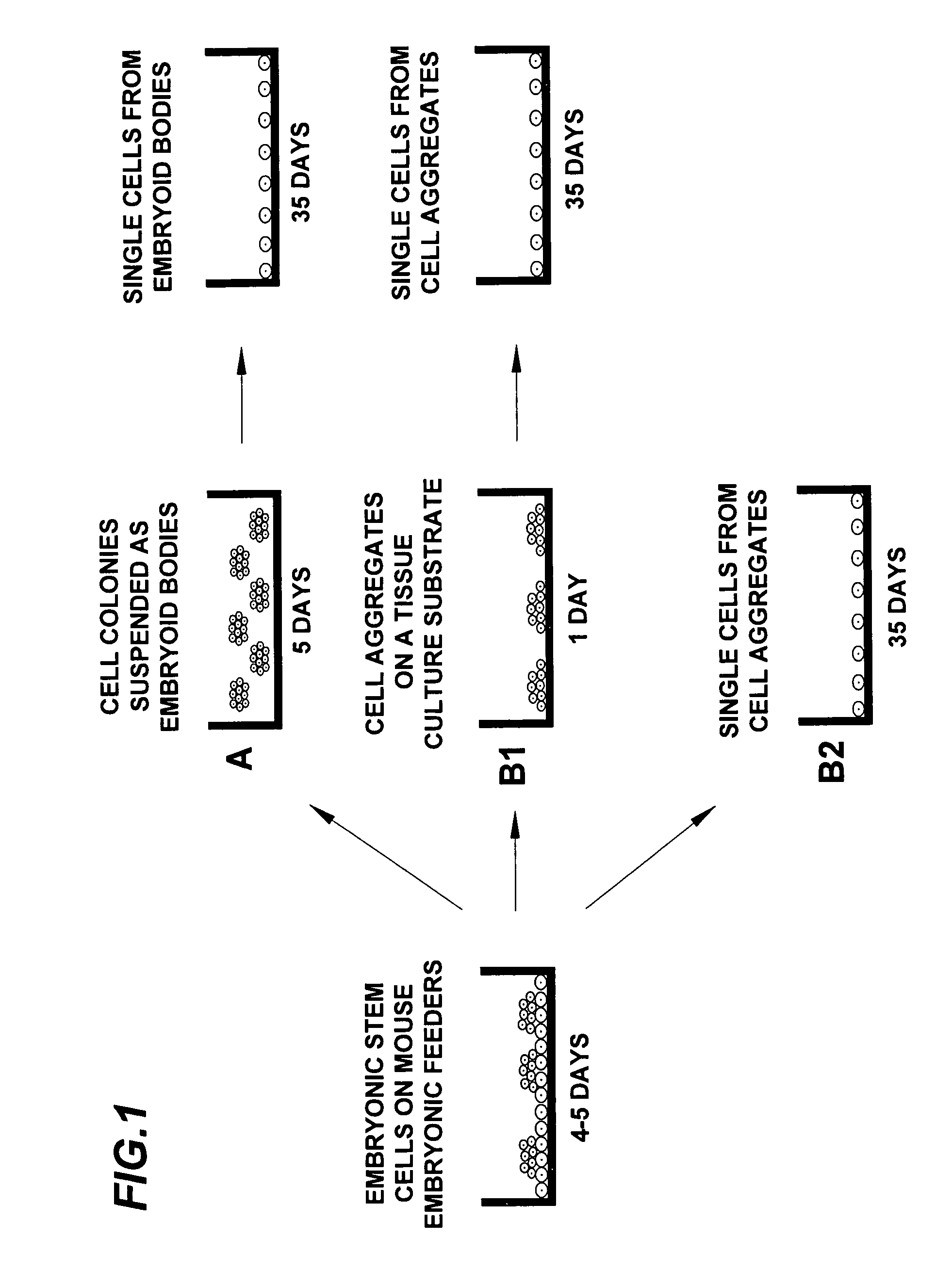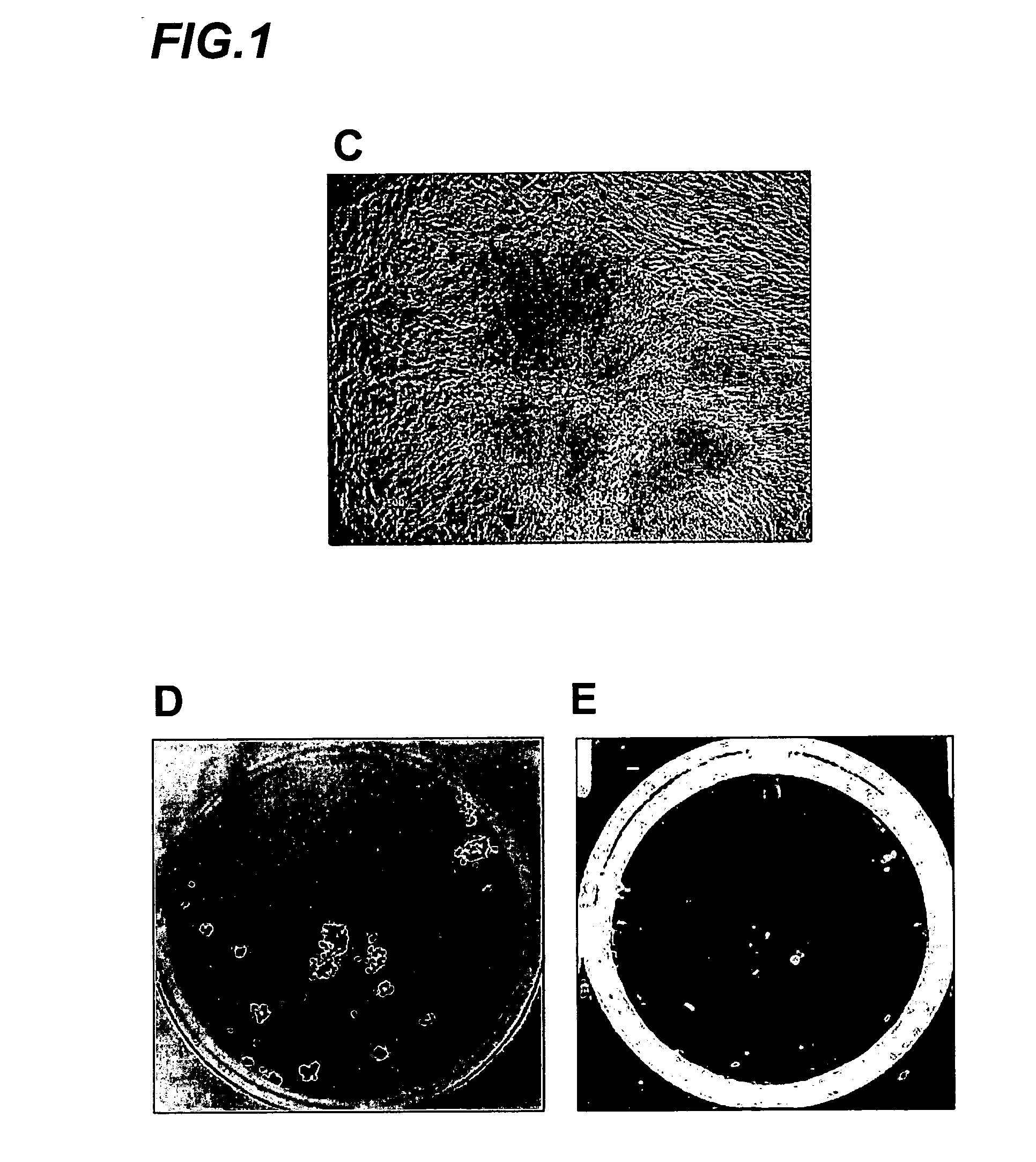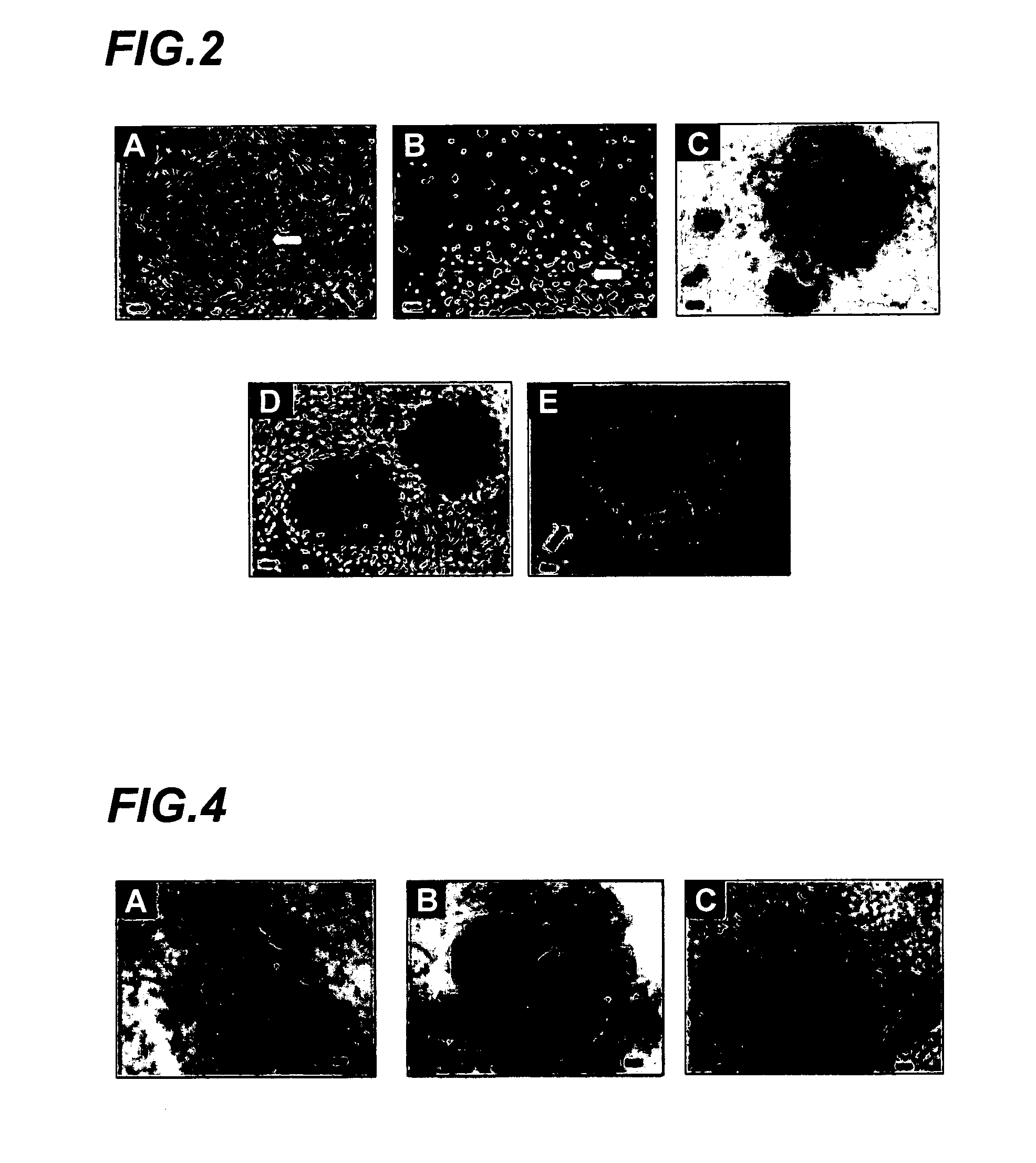Amplification of cell populations from embryonic stem cells
a technology cell populations, which is applied in the field of culture techniques for promoting the differentiation of embryonic stem cells, can solve the problems of host immune rejection, inherent limitations, and over-the-top shortage of donor organs, tissues and cells for repair, and overcome the current therapies for tissue defects, including autograft and allograft transplantation. morbidity and host immune rejection
- Summary
- Abstract
- Description
- Claims
- Application Information
AI Technical Summary
Benefits of technology
Problems solved by technology
Method used
Image
Examples
examples
Materials and Methods
[0042] All materials were used as received unless otherwise indicated. The following substrates were used: tissue culture polystyrene 75 cm2 and 25 cm2 flasks (BD Falcon®) and 24-well plates (Falcon®). The α-minimal essential medium (α-MEM), phosphate buffered saline (PBS), fetal bovine serum (FBS, catalog #10437-028), 0.25% trypsin, non enzymatic cell dissociation solution, and gentamicin were obtained from Invitrogen Co. The penicillin G, bovine serum albumin (BSA), amphotericin B (fungizone), AA, hexamethyldisilazane (HMDS), βgP, and DEX were obtained from Sigma Chemical Company. An alkaline phosphatase (ALP) detection kit was obtained from JAS Diagnostics (Miami, Fla.) and an OCN detection kit was obtained from Diagnostic Systems Laboratories Inc. (Webter, Tex.). Mouse embryonic feeder cells were obtained from Cell Essential (Boston, Mass.).
[0043] ES Cell Culture
[0044] hESC (line H9, passages 25 to 45) were grown as cell aggregates on an inactivated mous...
PUM
| Property | Measurement | Unit |
|---|---|---|
| concentration | aaaaa | aaaaa |
| concentration | aaaaa | aaaaa |
| surface area | aaaaa | aaaaa |
Abstract
Description
Claims
Application Information
 Login to View More
Login to View More - R&D
- Intellectual Property
- Life Sciences
- Materials
- Tech Scout
- Unparalleled Data Quality
- Higher Quality Content
- 60% Fewer Hallucinations
Browse by: Latest US Patents, China's latest patents, Technical Efficacy Thesaurus, Application Domain, Technology Topic, Popular Technical Reports.
© 2025 PatSnap. All rights reserved.Legal|Privacy policy|Modern Slavery Act Transparency Statement|Sitemap|About US| Contact US: help@patsnap.com



